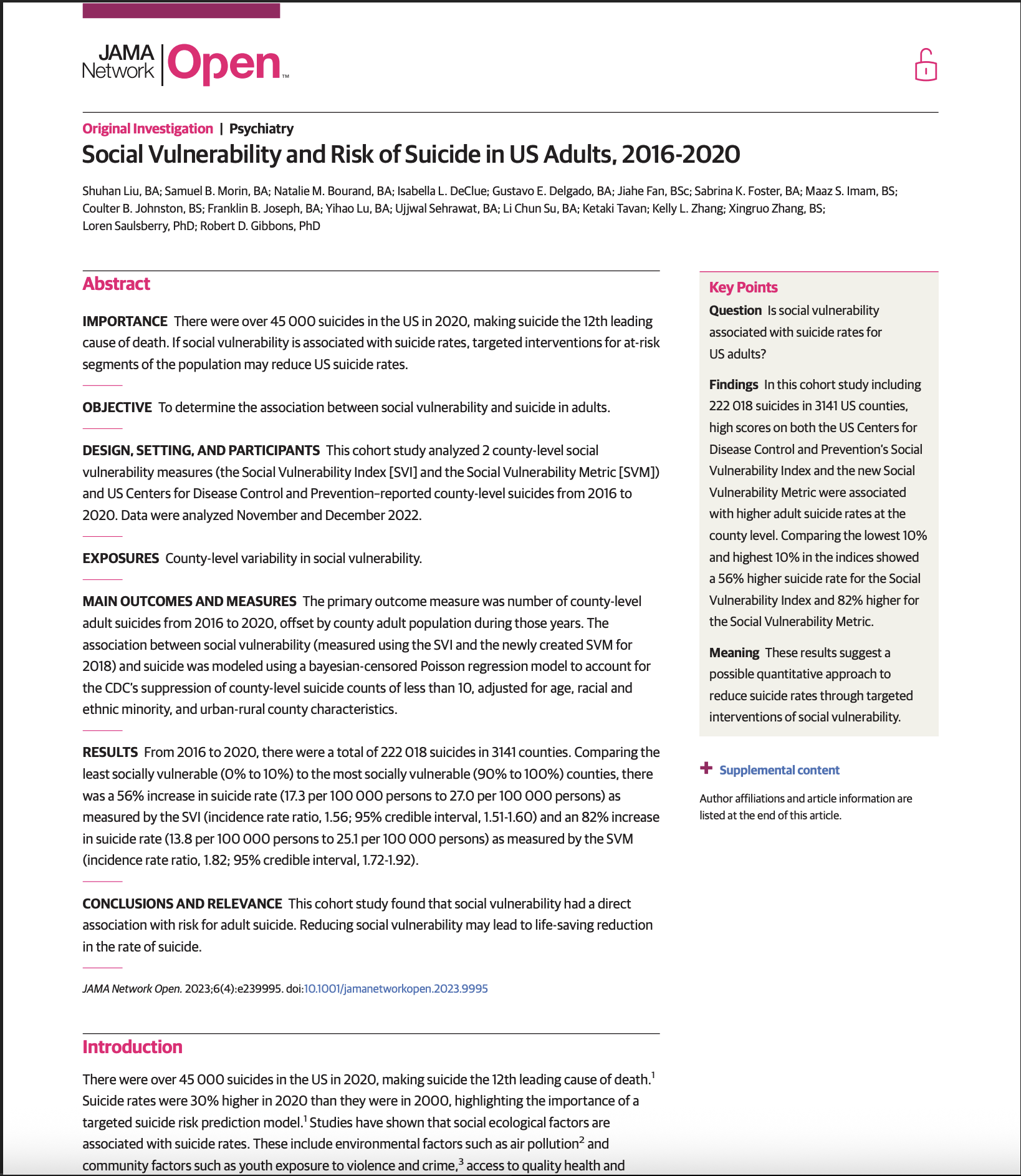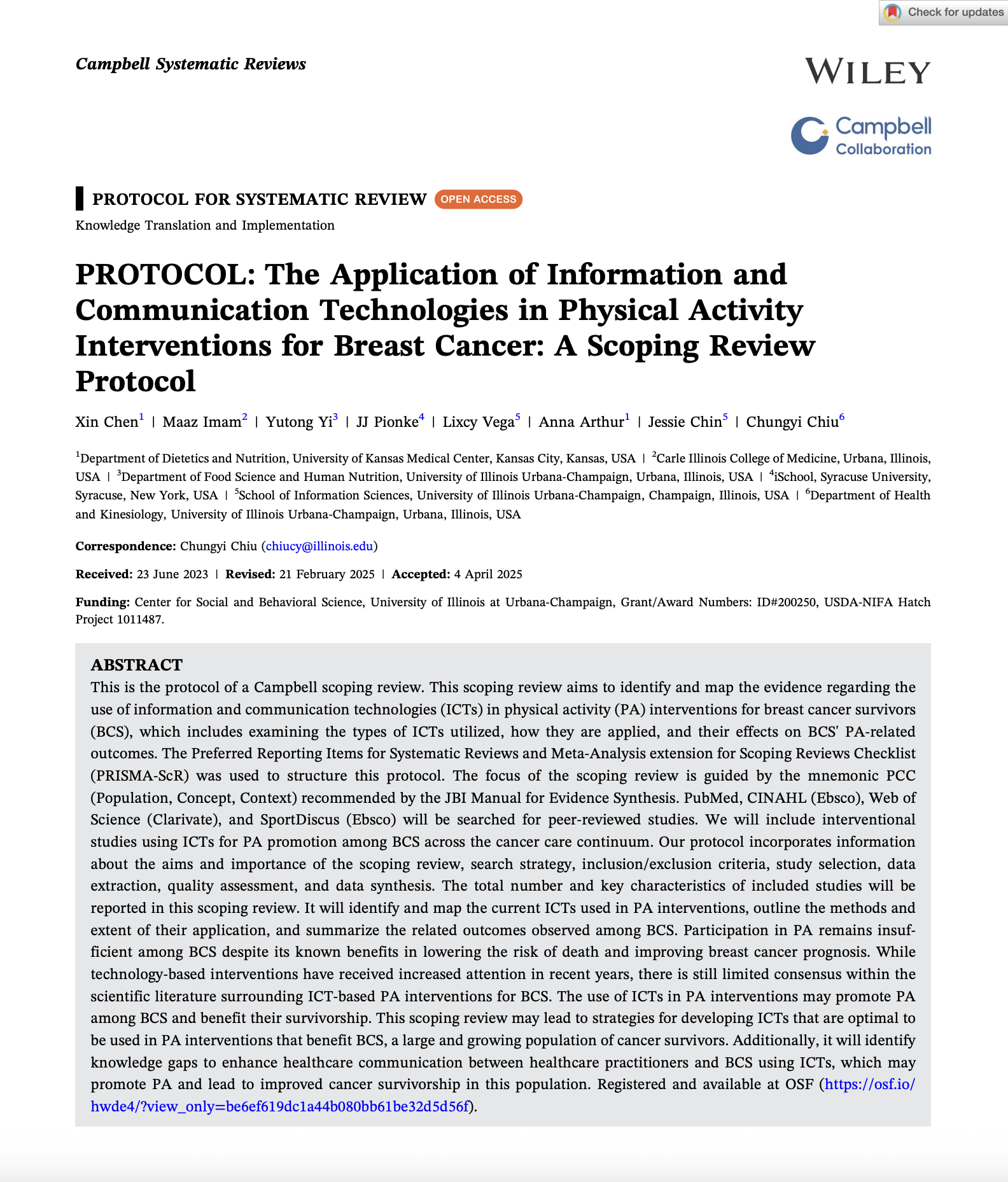Can we teach machines to notice what healthcare misses — before it’s too late?
I’m discovering how passive sensing, ambient data, and machine learning can be used to improve baseline health for overlooked and underserved groups. The focus is on low-footprint, equity-driven tools that surface risk early — without requiring more of the people already at risk.
Science
-

Social Vulnerability and Risk of Suicide in US Adults, 2016-2020
Question Is social vulnerability associated with suicide rates for US adults?
Findings In this cohort study including 222 018 suicides in 3141 US counties, high scores on both the US Centers for Disease Control and Prevention’s Social Vulnerability Index and the new Social Vulnerability Metric were associated with higher adult suicide rates at the county level. Comparing the lowest 10% and highest 10% in the indices showed a 56% higher suicide rate for the Social Vulnerability Index and 82% higher for the Social Vulnerability Metric.
Meaning These results suggest a possible quantitative approach to reduce suicide rates through targeted interventions of social vulnerability.
-

PROTOCOL: The Application of Information andCommunication Technologies in Physical ActivityInterventions for Breast Cancer: A Scoping ReviewProtocol
Question
How are information and communication technologies (ICTs) being applied in community-based interventions to support youth mental health, and what are their impacts?
Findings (Planned)
This systematic review will synthesize studies evaluating the effectiveness of ICT-enabled, community-based mental health interventions for youth (ages 10–24). The protocol outlines a structured methodology for identifying and assessing both clinical and social outcomes across digital tools like mobile apps, telehealth platforms, and online peer support systems. Subgroup analysis by intervention type, setting, and equity considerations will be included.
Meaning
The review aims to provide evidence-based guidance on how digital tools can be integrated into community-based care models for youth mental health — with attention to accessibility, effectiveness, and equity.
Tools in Development
This research asks:
Can we embed intelligence into the environments and systems that touch people first — not last?
To explore that, I’m currently prototyping a few low-footprint, equity-driven AI concepts grounded in the science above
-
A lightweight conversational interface designed to explore motivational coaching and behavioral nudging in community settings.
Currently being piloted as a research concept for understanding user comfort and engagement — especially in underserved populations. -
A visual and data exploration tool designed to surface community-level indicators of risk using passive data streams.